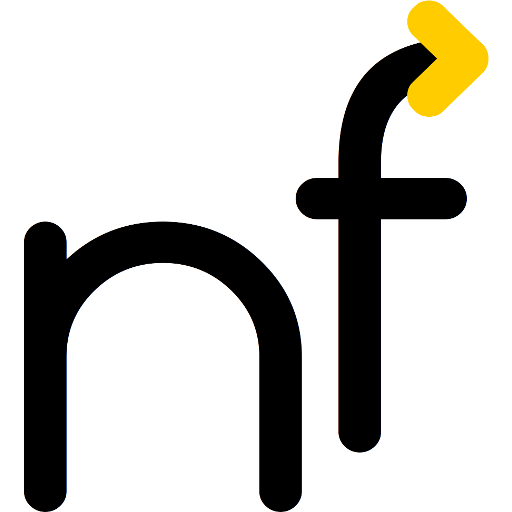Web3 claims to be the only way to save us from commercial entities defining what we can see and what not. Yet, it does exactly this: It results in commercialized entities defining what we can see and what not.
More on the blockchain ecosystem in this overview and especially in the simple, humorous, yet thorough article «Hitchhiker’s Guide to the Blockchain».
What is Web3?
According to its proponents, Web3 is going to “increased data security, scalability, and privacy for users and combat the influence of large technology companies“. How it does this is not well defined. Cryptocurrency and blockchain supporters envision these goals to be achieved by basing Web3 on cryptocurrencies and the blockchain, as a Decentralized Autonomous Organization.
Moxie Marlinspike’s attempts at creating Web3 distributed apps were sobering:
- It was not decentralized, it required you to go through one of a few gateways to make the app practical.
- These gateways exert at least as much control over what you can do and cannot do than traditional web hosting sites.
- Doing the operations on an actual blockchain is very expensive.
- Most users actually don’t care.
Distributed systems
Networked systems, like a lot of the Internet and its applications, typically come in one of three forms:
- Centralized applications, which run one one system (or at least appear to). E.g. your bank’s e-banking or most commercial Internet services like Zoom or Slack.
- Federated systems, where a lot of people/organizations run a lot of centralized systems; however, these centralized systems can talk to each other. The most well-known example is email: Anyone can operate a mail server, yet you can send mail both locally (on the same server) or to any other (remote) server. Each of these servers is responsible for a (list of) domains and everyone can find out which server to contact for a particular destination domain.
- Decentralized or distributed applications, where responsibility is much more fluid. E.g., the early peer-to-peer (P2P) systems for file sharing, where all participants were connected to each other, directly or indirectly. Searching for a particular file would result in that query being sent to many (or even all) of the systems; anyone with answers would reply.
The blockchain is also a distributed system. In this particular case, all the blockchain data is copied (replicated) among the nodes, i.e., everyone (conceptually) has a copy of all the data.
Web3 vs. P2P distributed apps
During the heyday of Peer-to-Peer systems around two decades ago, people contributed spare resources (computing, storage, network bandwidth) willingly to what they believed to be worthy causes. Today, a handful of Watts can go a long way with tiny, efficient, and inexpensive computers such as the Raspberry Pi, making a personal server extremely affordable.
So, essentially, the P2P community established something like a tiny, lightweight communist bubble, to the benefits of everyone. It wasn’t perfect, but it worked, if someone could install the software and keep it running.
The Web3 community approaches this from the opposite side: Instead of a lightweight communistic take, they follow a heavyweight libertarian path: Everything should be monetized.
For this, they built a complicated, expensive underpinning, and added more layers on top of this, each more complicated, failure-prone, and expensive. Everyone ends up spending more money and other resources. However, the server administration is now done by someone who gets paid for this, but it is still up to you to get the actual Web3 software running (and writing a correct smart contract is among the most ambitious software projects, complicated and error prone).
Which is better?
P2P never made it to the mainstream; instead, centralized systems still (or, again? even more?) dominate the landscape. So, because it failed, should we try Web3? I doubt it, as it is more likely to fail, due to higher complexity and more dependencies.
So, unless the setup and maintenance trouble of the initial setup can be reduced (and there are community efforts out there), the best way to go is the centralized model: You pay someone specific to do this. Maybe set up a not-for-profit association to provide the necessary money.
Neither in the centralized, P2P, nor Web3 world, things can be left unmaintained. Anything else is an illusion.
What else?

- A bug in your smart (Web3) contract can make it unusable or destroy/steal “actual” cryptocurrency. (Thanks, Stephan Neuhaus! Plenty more examples here.)
- A sprinkle of trust is the best grease. Having a local network of people goes a long way.
Acknowledgments
This article was inspired by Cory Doctorow in two ways:
- The topic was inspired by his article «A useful, critical taxonomy of decentralization, beyond blockchains».
- His Memex Method explains how to use a blog post as a bookmark which you can actually reuse. I’m trying this here.
Further reading
- Marcel Waldvogel: Hitchhiker’s Guide to the Blockchain, 2022-04-09. Explaining the blockchain technology and how the claims match (or, rather, mostly fail to match) the technology.
Blockchain ecosystem
More posts in the blockchain ecosystem here, with the latest here:
- The year in review
 This is the time to catch up on what you missed during the year. For some, it is meeting the family. For others, doing snowsports. For even others, it is cuddling up and reading. This is an article for the latter.
This is the time to catch up on what you missed during the year. For some, it is meeting the family. For others, doing snowsports. For even others, it is cuddling up and reading. This is an article for the latter. - NFTs are unethical
 As an avid reader, you know my arguments that neither NFT nor smart contracts live up to their promises, and that the blockchain underneath is also more fragile and has a worse cost-benefit ratio than most believe. Similarly, I also claim the same for the metaverses built on top of them all. And that the… Read more: NFTs are unethical
As an avid reader, you know my arguments that neither NFT nor smart contracts live up to their promises, and that the blockchain underneath is also more fragile and has a worse cost-benefit ratio than most believe. Similarly, I also claim the same for the metaverses built on top of them all. And that the… Read more: NFTs are unethical - Inefficiency is bliss (sometimes)
 Bureaucracy and inefficiency are frowned upon, often rightly so. But they also have their good sides: Properly applied, they ensure reliability and legal certainty. Blockchain disciples want to “improve” bureaucracy-ridden processes, but achieve the opposite. Two examples:
Bureaucracy and inefficiency are frowned upon, often rightly so. But they also have their good sides: Properly applied, they ensure reliability and legal certainty. Blockchain disciples want to “improve” bureaucracy-ridden processes, but achieve the opposite. Two examples: - The FTX crypto exchange and its spider web
 Yesterday, the U.S. Securities and Exchange Commission (SEC) released its indictment against Sam Bankman-Fried. It details the financial entanglements of FTX, Alameda Research and more than a hundred other companies and individuals. We have tried to disentangle these allegations somewhat for you.
Yesterday, the U.S. Securities and Exchange Commission (SEC) released its indictment against Sam Bankman-Fried. It details the financial entanglements of FTX, Alameda Research and more than a hundred other companies and individuals. We have tried to disentangle these allegations somewhat for you. - Web3 for data preservation? (Or is it just another expensive P2P?)
 Drew Austin raises an important question in Wired: How should we deal with our accumulated personal data? How can we get from randomly hoarding to selection and preservation? And why does his proposed solution of Web3 not work out? A few analytical thoughts.
Drew Austin raises an important question in Wired: How should we deal with our accumulated personal data? How can we get from randomly hoarding to selection and preservation? And why does his proposed solution of Web3 not work out? A few analytical thoughts. - Rejuvenation for Pro Senectute through NFT and Metaverse?
 Pro Senectute beider Basel, a foundation to help the elderly around Basel, launched its NFT project last week and already informed about its Metaverse commitment beforehand. According to a media release, Michael Harr, managing director of the 15-million Basel-based company, wants to use the purchase of these “properties” in a “central location” in two online… Read more: Rejuvenation for Pro Senectute through NFT and Metaverse?
Pro Senectute beider Basel, a foundation to help the elderly around Basel, launched its NFT project last week and already informed about its Metaverse commitment beforehand. According to a media release, Michael Harr, managing director of the 15-million Basel-based company, wants to use the purchase of these “properties” in a “central location” in two online… Read more: Rejuvenation for Pro Senectute through NFT and Metaverse?


